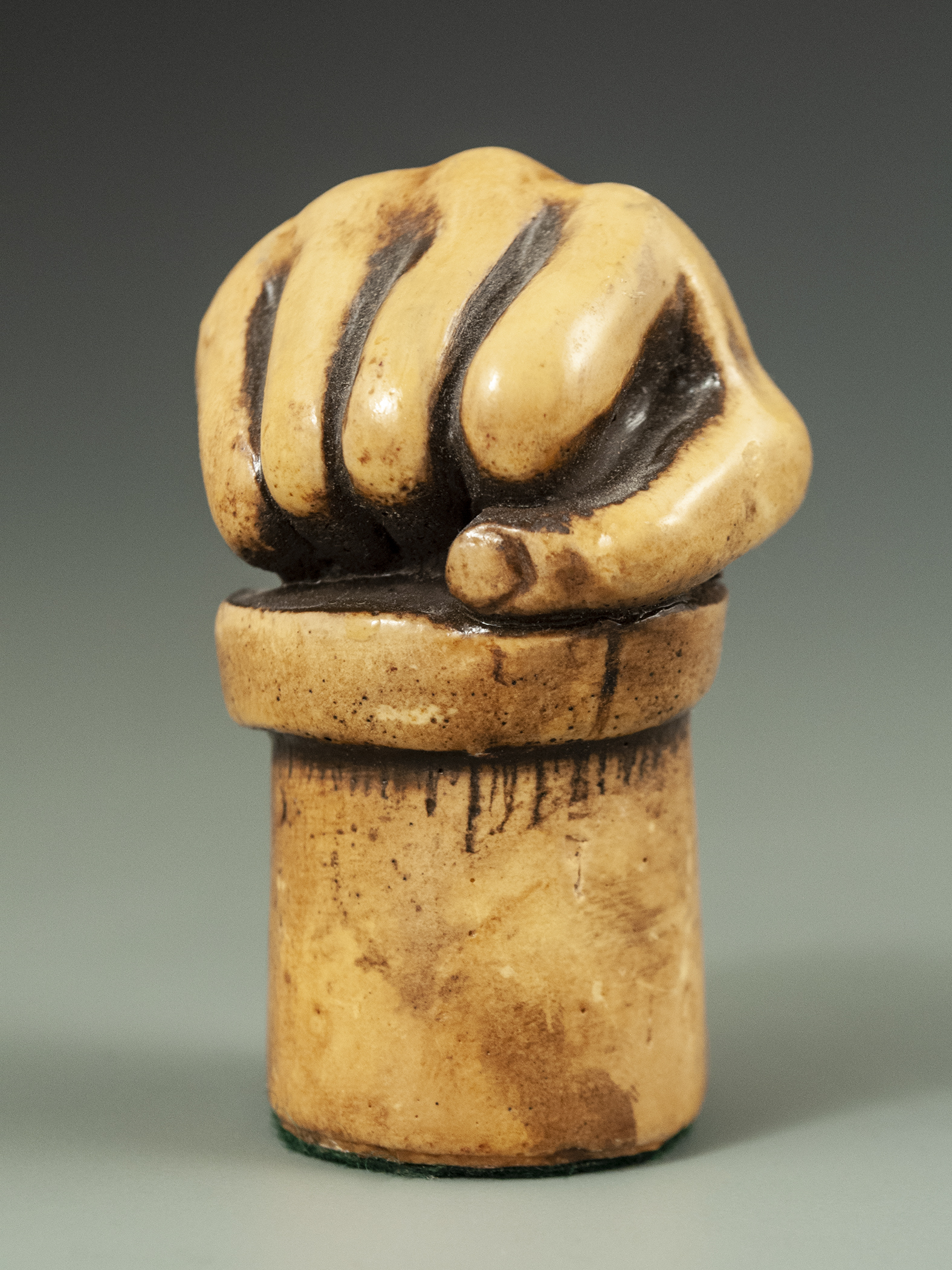Chess Pawn
San Francisco, 1986

During my first visit to Kathmandu, an artist named Michael Pedroni had an opening at the American Cultural Center. His work was vivid and surreal, often tricking the eye. One painting portrayed a group of Buddhist monks. Few people noticed that one of the monks, clad in a red and yellow robe, was missing his head.
There was a guest book, and I filled a page with commentary; a virtual review, as Michael later recalled, of which paintings I liked, which I didn’t, and why. Pretty obnoxious. But my hubris won his attention, and we became friends—first in Nepal, then after we’d returned to the Bay Area.
Michael lived with his wife, Patrice, in a North Beach fourplex. The building had been in his family since 1944. In the basement was his office, which also served as a small library and gallery. On the desk sat a chess set that Michael had made in 1970. The pawns were fists—a nice metaphorical touch. I’ll never forget the moment when Michael, grinning broadly, instructed me to push on one of the bookshelves. The office wall swung away, opening onto a large studio filled with works-in-progress, crazy sculptures, and vintage props from Playland-by-the-Sea.
In 1986, Michael and Patrice rented the flat above them to a Latina medical worker named Carina. I met her right after she moved in. Carina laughed that she hadn’t even bought herself a toothbrush yet; I mailed her one the next day. We became lovers soon after, and traveled together to Mexico, India, and Nepal.
On March 10th, 1990, the four of us—along with Michael and Patrice’s two young daughters—celebrated my birthday in the Pedroni’s kitchen. The evening was a blur; I’d returned four days earlier from another long trip to Asia. Carina was pouring red wine when her upstairs phone began to ring. She dashed off to answer it, and returned with a puzzled expression. “It’s your mother,” Carina told me. “She sounds… awful.”
“I’ll be right back,” I said. But the person who left that party never came back.
